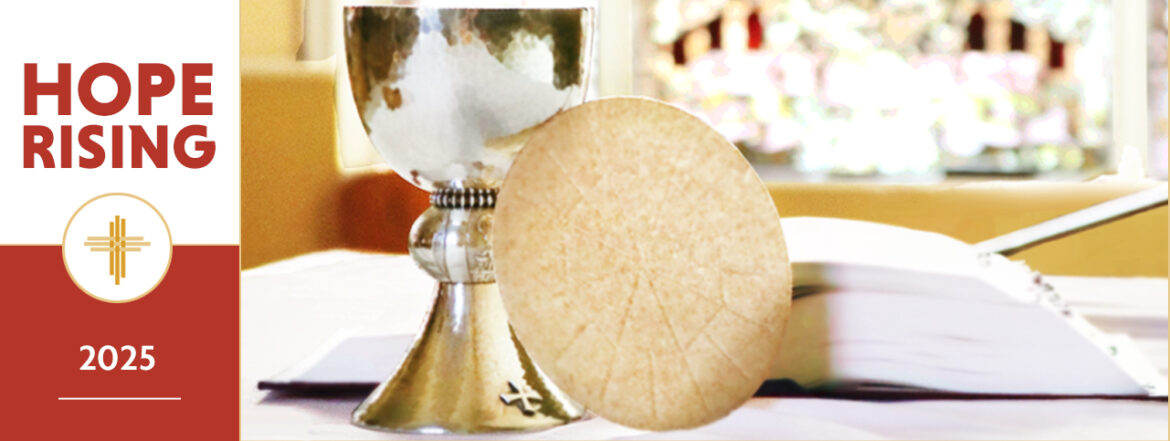Author Archives: Mississippi Catholic
Diocesan schools show faith and excellence in Cognia reaccreditation
By Staff Reports
JACKSON – The Diocese of Jackson’s Office of Catholic Education recently completed a major milestone with its system reaccreditation review conducted by Cognia, Inc., from April 8–10, 2025. The review was led by Dr. Michael Bratcher, Cognia’s Director of Accreditation Services and the national liaison for Catholic school accreditation. His extensive experience and expertise in evaluating Catholic institutions made him especially well-suited to assess our system’s distinct governance structure, Canonical foundations and deeply rooted Catholic identity.
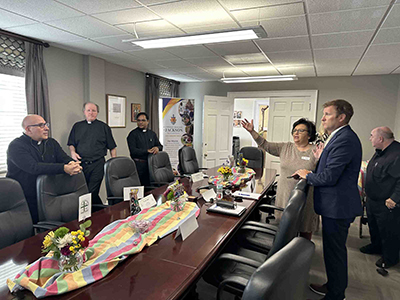
Unlike public or independent schools, Catholic school systems require evaluators who understand the unique relationships between pastors and principals, the influence of Canon Law, and the integral role of faith in daily instruction. Dr. Bratcher’s presence marked a significant response to longstanding requests for accreditation professionals who can truly appreciate these complexities.
The Office of Catholic Education was evaluated across four primary domains: Culture of Learning, Leadership for Learning, Engagement of Learning, and Growth in Learning – encompassing 30 rigorous standards. These areas, designed with the student as the central stakeholder, were assessed through surveys, performance data and in-depth classroom observations.
Cognia accreditation is internationally recognized for its high standards and emphasis on continuous improvement. The Diocese of Jackson first earned this prestigious system-wide accreditation in 2019. Under this model, every school in the diocesan system shares in the accreditation status, promoting consistency, excellence and accountability throughout.
Following this year’s engagement review, the Diocese of Jackson received an Index of Educational Quality (IEQ) score of 389 out of 400 – an exceptional result that stands 93 points above Cognia’s global network average of 296. This achievement reflects the outstanding efforts of diocesan Catholic school educators and administrators, who remain committed to excellence and mission-driven service.
Karla Luke, executive director of Catholic Schools said that to achieve a score of this caliber means diocesan school systems are solid, the best practices are imbedded in operations and instruction, and the diocesan Catholic school system is continuously striving for improvement.
“I am so very proud of the efforts of our Catholic School community in the entire Diocese of Jackson. I would like to thank our teachers and administrators for consistently delivering such high-quality education to our students,” said Luke.
The diocese extends special thanks to the leadership team that helped prepare for the review: Mary Arledge (Vicksburg Catholic Schools), Kimberley Burkley (Cathedral Catholic School), Dr. Dena Kinsey (St. Joseph Catholic School, Madison), and Office of Catholic Education staff members Rachel Patterson and Virginia Hollingsworth.
“With this outstanding reaccreditation behind them, diocesan leaders look forward to sharing more exciting developments in Catholic education in the months ahead,” said Luke.
(To learn more about Cognia Accreditation and review performance standards visit https://www.cognia.org/accreditation.)
Youth
Announcement of Pope Leo XIV at Catholic Schools across the diocese
The election of a new Pope is a momentous event in the Catholic Church, and it reflects the unity and diversity of the global community. It was heartwarming to see students come together to witness this historic moment, share their thoughts, and discuss what it might mean for our faith and the world.
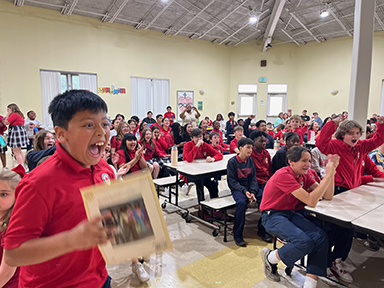
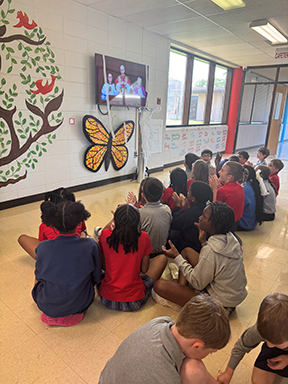
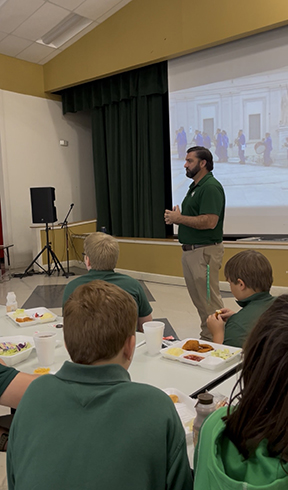
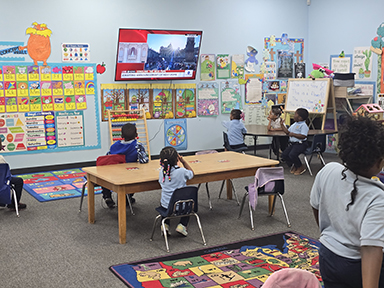
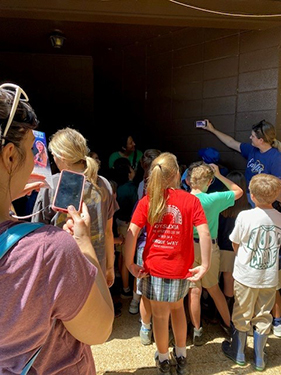
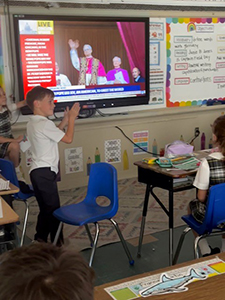
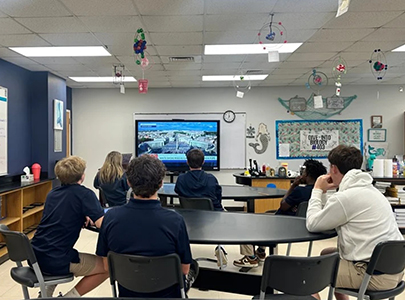
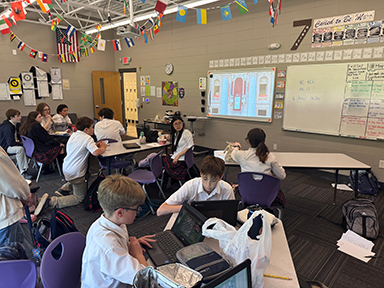
Chicago native Cardinal Prevost elected pope, takes name Leo XIV
By Cindy Wooden
VATICAN CITY (CNS) – Cardinal Robert F. Prevost, the Chicago-born prefect of the Dicastery for Bishops under Pope Francis, was elected the 267th pope May 8 and took the name Pope Leo XIV.
He is the first North American to be elected pope and, before the conclave, was the U.S. cardinal most mentioned as a potential successor of St. Peter.
The white smoke poured from the chimney on the roof of the Sistine Chapel at 6:07 p.m. Rome time and a few minutes later the bells of St. Peter’s Basilica began to ring.
About 20 minutes later the Vatican police band and two dozen members of the Pontifical Swiss Guard marched into St. Peter’s Square. They soon were joined by the marching band of the Italian Carabinieri, a branch of military police, and by units of the other branches of the Italian military.
As soon as news began to spread, people from all over Rome ran to join the tens of thousands who were already in the square for the smoke watch. Rome Mayor Roberto Gualtieri was among them.
French Cardinal Dominique Mamberti, protodeacon of the College of Cardinals, appeared on the central balcony of St. Peter’s Basilica at 7:12 p.m. He told the crowd: “I announce to you a great joy. We have a pope (‘Habemus papam’),” saying the cardinal’s name in Latin and announcing the name by which he will be called.
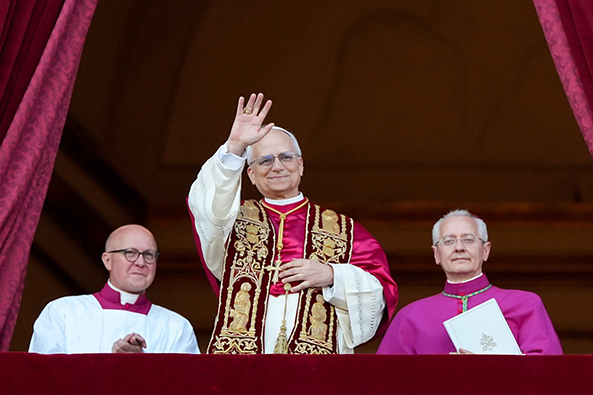
Ten minutes later, the new Pope Leo came out onto the balcony, smiling and waving to the crowd wearing the white papal cassock, a red mozzetta or cape and a red stole to give his first public blessing “urbi et orbi” (to the city and the world).
The crowd shouted repeatedly, “Viva il papa” or “Long live the pope” as Pope Leo’s eyes appeared to tear up.
“Peace be with you,” were Pope Leo’s first words to the crowd.
“My dear brothers and sisters, this is the first greeting of the risen Christ, the good shepherd who gave his life for God’s flock,” he said, praying that Christ’s peace would enter people’s hearts, their families and “the whole earth.”
The peace of the risen Lord, he said, is “a peace that is unarmed and disarming.”
Signaling strong continuity with the papacy of Pope Francis, Pope Leo told the crowd that God “loves all of us unconditionally” and that the church must be open to everyone.
“We are all in God’s hands,” he said, so “without fear, united, hand in hand with God and with each other, let us go forward.”
He thanked the cardinals who elected him, apparently on the fourth ballot of the conclave, “to be the successor of Peter and to walk with you as a united church always seeking peace, justice” and together being missionary disciples of Christ.
Telling the crowd that he was an Augustinian, he quoted St. Augustine, who said, “With you I am a Christian and for you a bishop.”
“Together we must try to be a missionary church, a church that builds bridges and always dialogues, that is always open to receiving everyone like this square with its arms open to everyone, everyone in need,” he said.
The new bishop of Rome told the people of his diocese and of the whole Catholic Church, “We want to be a synodal church, a church that journeys, a church that seeks peace always, that always seeks charity, that wants to be close to people, especially those who are suffering.”
After asking the crowd to recite the Hail Mary with him, Pope Leo gave his first solemn blessing.
Cardinals over the age of 80, who were not eligible to enter the conclave, joined the crowd in the square. Among them were Cardinals Seán P. O’Malley, the retired archbishop of Boston; Donald W. Wuerl, the retired archbishop of Washington; and Marc Ouellet, retired prefect of the Congregation for Bishops.
A longtime missionary in Peru, the 69-year-old pope holds both U.S. and Peruvian citizenship.
La Repubblica, the major Italian daily, described him April 25 as “cosmopolitan and shy,” but also said he was “appreciated by conservatives and progressives. He has global visibility in a conclave in which few (cardinals) know each other.”
That visibility comes from serving as prefect of the Dicastery for Bishops for the past two years, he was instrumental in helping Pope Francis choose bishops for many Latin-rite dioceses, he met hundreds of bishops during their “ad limina” visits to Rome and was called to assist Latin-rite bishops “in all matters concerning the correct and fruitful exercise of the pastoral office entrusted to them.”
The new pope was serving as bishop of Chiclayo, Peru, when Pope Francis called him to the Vatican in January 2023.
During a talk at St. Jude Parish in Chicago in August, the then-cardinal said Pope Francis nominated him “specifically because he did not want someone from the Roman Curia to take on this role. He wanted a missionary; he wanted someone from outside; he wanted someone who would come in with a different perspective.”
In a March 2024 interview with Catholic News Service, he said Pope Francis’ decision in 2022 to name three women as full members of the dicastery, giving them input on the selection of bishops “contributes significantly to the process of discernment in looking for who we hope are the best candidates to serve the church in episcopal ministry.”
To deter attitudes of clericalism among bishops, he said, “it’s important to find men who are truly interested in serving, in preaching the Gospel, not just with eloquent words, but rather with the example and witness they give.”
In fact, the cardinal said, Pope Francis’ “most effective and important” bulwark against clericalism was his being “a pastor who preaches by gesture.”
In an interview in 2023 with Vatican News, then-Cardinal Prevost spoke about the essential leadership quality of a bishop.
“Pope Francis has spoken of four types of closeness: closeness to God, to brother bishops, to priests and to all God’s people,” he said. “One must not give in to the temptation to live isolated, separated in a palace, satisfied with a certain social level or a certain level within the church.”
“And we must not hide behind an idea of authority that no longer makes sense today,” he said. “The authority we have is to serve, to accompany priests, to be pastors and teachers.”
As prefect of the dicastery then-Cardinal Prevost also served as president of the Pontifical Commission for Latin America, where nearly 40% of the world’s Catholics reside.
A Chicago native, he also served as prior general of the Augustinians and spent more than two decades serving in Peru, first as an Augustinian missionary and later as bishop of Chiclayo.
Soon after coming to Rome to head the dicastery, he told Vatican News that bishops have a special mission of promoting the unity of the church.
“The lack of unity is a wound that the church suffers, a very painful one,” he said in May 2023. “Divisions and polemics in the church do not help anything. We bishops … must accelerate this movement toward unity, toward communion in the church.”
In September, a television program in Peru reported on the allegations of three women who said that then-Bishop Prevost failed to act against a priest who sexually abused them as minors. The diocese strongly denied the accusation, pointing out that he personally met with the victims in April 2022, removed the priest from his parish, suspended him from ministry and conducted a local investigation that was then forwarded to the Vatican. The Vatican said there was insufficient evidence to proceed, as did the local prosecutor’s office.
Pope Leo was born Sept. 14, 1955, in Chicago, Illinois. He holds a bachelor’s degree in mathematics from the Augustinian-run Villanova University in Pennsylvania and joined the order in 1977, making his solemn vows in 1981. He holds a degree in theology from the Catholic Theological Union in Chicago and a doctorate from the Pontifical University of St. Thomas Aquinas in Rome.
He joined the Augustinian mission in Peru in 1985 and largely worked in the country until 1999 when he was elected head of the Augustinians’ Chicago-based province. From 2001 to 2013, he served as prior general of the worldwide order. In 2014, Pope Francis named him bishop of Chiclayo, in northern Peru, and the pope asked him also to be apostolic administrator of Callao, Peru, from April 2020 to May 2021.
The new pope speaks English, Spanish, Italian, French, Portuguese and can read Latin and German.
CSA feature: Family Ministry
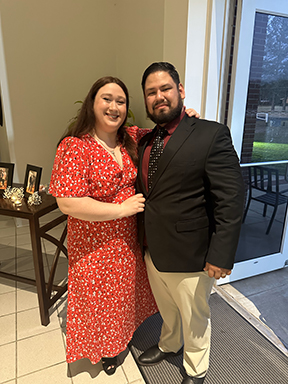
When Hannah and Mario Villasenor, parishioners at St. Therese Catholic Church in Jackson, signed up for an Engaged Encounter weekend before their wedding in October 2021, they never imagined they would one day be a presenting couple.
“We thought someone would call us once we had been married long enough or had somehow become good enough at marriage,” Hannah laughed. “So, when Debbie Tubertini, from the Office of Family Ministry, reached out and asked us to present, we were honestly surprised. We did not think she meant us!”
Their first weekend as a presenting couple was in April 2023. Since then, Hannah and Mario have found joy and purpose in sharing their story with other engaged couples preparing for the sacrament of marriage.
“We remember what it felt like to sit in those chairs, listening to the presenters and thinking, ‘Wow, they really have it all figured out,’” said Mario. “Even though they told us they were not experts, it sure seemed like they were.”
Now as presenters, Hannah and Mario strive to offer something different and authentic. “We want the couples to take what resonates and use it in their own relationships,” Mario said.
“There’s no such thing as a perfect marriage – just two people choosing every day to love and serve one another the best they can.”
Beyond helping others, the experience has deepened their own relationship. “It’s a chance to pause, reflect on our own marriage, and grow. We leave each retreat reminded of why we said yes in the first place,” according to Hannah.
Hannah and Mario expressed gratitude to those who support the Catholic Service Appeal, “Your gifts are changing lives,” Mario said. “They’re helping couples build strong, faith-filled foundations for their future. If you have not yet given, we hope you will consider it. Every gift, no matter the size, makes a difference.”
Heart of a Deacon: A life of service and growth
GUEST COLUMN
By Deacon Ted Schreck
As I look back over the years since my ordination to the permanent diaconate in June 2016, I recall so many wonderful memories and some difficult times as well. Actually, my journey began years earlier. My baptism was when I was 10 days old back in December 1969; however, when I think about what led more immediately to my call, I think of the time from 2011 when my older brother Mike was ordained as a permanent deacon for the Archdiocese of Kansas City in Kansas. I watched my brother and his family for the years of his formation and was blessed to be present for his ordination. To say the least, this made a lasting impression on me.
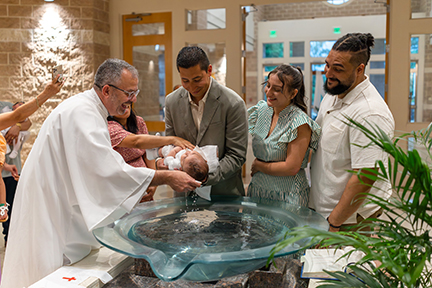
In 2009-2010, I began earnestly considering my own call to consider making an application for the permanent diaconate formation program. At that time, we in the Diocese of Jackson had not had any formation classes for permanent deacons in a very long time. However, while I was watching my brother’s call coming to fruition at his own ordination, I was being encouraged to consider my own call especially among my brother deacons serving in the Diocese of Memphis where I was working both at Memphis Catholic High School and Middle School and at Holy Spirit Catholic Church in East Memphis.
So, the discernment process for me continued in earnest. I wanted to know for myself that I was not seeking some title or specific affirmation for my service in the church. When we finally had an information session at St. Mary’s Catholic Church in Batesville, Mississippi, I welcomed the words from the presenters that the call was “not about you,” but about answering God’s call for his church and his people. This realization that my call to consider the permanent diaconate was not about me, but about seeking to do God’s will in my community was what I needed.
I learned a lot about myself as I reflected on my spiritual autobiography and began to share with friends and long-time neighbors from years previous that I was seriously considering this call to become a permanent deacon. The amazing thing that I heard from these friends and family members was “It’s about time … I’ve seen the servant in you for years.” Talk about God showing others our gifts and we ourselves not recognizing those gifts.
To fast forward, I loved (for the most part) my years of formation with my cohort from the Diocese of Jackson and the men (and their wives) from the Diocese of Memphis. I truly experienced being stretched and formed. I recognized strengths within me and some weaknesses as well. I have to say that while the information and knowledge gained was very important, I grew the most I believe through walking with my brothers through the formation process. We each experienced joys and sorrows over that 5-year period. But we stood together, and we laughed and we cried together.
One funny story that we like to look back on from time to time is when I parked my vehicle at St. James in Corinth to ride along with my brothers from St. Joseph in Starkville up to a retreat at St. Meinrad in Indiana. You may know that Corinth (in the New Testament – the home of the Corinthians) is in modern day Turkey. Well, on that day as I parked my vehicle at St. James in Corinth, I met some not-so-friendly wild “turkeys” that the priest at that time was raising on the church property.
Finally, after five years of formation, I and my brother deacons arrived at the Cathedral of St. Peter in Jackson for our ordination. I remember so many different feelings and joys on that day. The very next day as I returned to Christ the King parish in Southaven for the first Mass after our ordination, I had the opportunity to preach the homily for the first time. Understandably, I wanted to include thanks to my family and my fellow parishioners who had walked along this journey with me. Several parishioners asked me not to make them cry every time I preached like they did that day as I remembered my mother who had passed away many years prior.
So, what have these last almost nine years brought about in my life as a husband, brother, dad, grandfather and deacon? I have celebrated over 75 baptisms, 18 weddings, 4 presentations, 29 funerals, and many opportunities to walk alongside families from very different cultures. And, I have grown with each individual, couple and family I have encountered.
This growth has primarily come through my ability and desire to listen and to connect with others. Each day, I pray that God gives me the strength and the courage to be a better husband, a better father/grandfather/brother, a better friend and a better deacon. And he keeps on answering that prayer beyond my wildest expectations. I’ve certainly made my share of mistakes, but I am truly blessed to get to listen to and connect with more and more people in the six parish communities which I serve and in other parish communities when I have been invited to offer Advent or Lenten reflections.
In my case, I was working in a Catholic school throughout my years of formation and then worked at another Catholic elementary school as the director of development even after my ordination. In early 2022, I took a further step outside my comfort zone and joined the parish staff for the six Catholic parishes of Northwest Mississippi which are served by the Priests of the Sacred Heart as the director of evangelization. I say that this was outside my comfort zone as I considered which qualifications I did not possess (or my weaknesses). But I have been beyond blessed as I pursued this work especially in adult faith formation, OCIA, sacramental preparation, and so much more. I believe that any real success that has come through trusting in God’s will and pursuing my strengths (more than focusing on my weaknesses).
What’s next? I know that there is so much work to do in helping God’s people draw closer to Him and closer to His church. That’s where my focus is! I just pray that I allow God to use me as he sees fit. My goal is to continue to grow as a Man of God, to be faithful to my family, and to fulfill my baptismal promise. Amen!
(Deacon Ted Schreck is the director of evangelization for the Catholic Parishes of Northwest Mississippi. He can be reached at nwms.evangelization@gmail.com. To learn more about the permanent diaconate visit https://bit.ly/JacksonDiaconate.)
Pope Leo’s motto, coat of arms pay homage to St. Augustine
VATICAN CITY (CNS) – Pope Leo XIV’s devotion to St. Augustine, his life and ministry as a member of the Augustinian order and his focus on the church unity are reflected in his episcopal motto and coat of arms.
When he appeared on the balcony of St. Peter’s Basilica shortly after his election May 8, he introduced himself as “an Augustinian, a son of St. Augustine.”
And he explained that the cardinals who elected him “have chosen me to be the Successor of Peter and to walk together with you as a Church, united, ever pursuing peace and justice, ever seeking to act as men and women faithful to Jesus Christ, in order to proclaim the Gospel without fear, to be missionaries.”
His episcopal motto is, “In Illo uno unum,” or literally “In the One, we are one.”
Vatican News explained that the phrase is taken from St. Augustine’s “Exposition on Psalm 127,” where he explains that “although we Christians are many, in the one Christ we are one.”
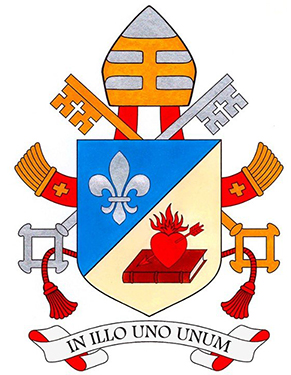
As a cardinal, he told Vatican News in 2023, “As can be seen from my episcopal motto, unity and communion are truly part of the charism of the Order of St. Augustine, and also of my way of acting and thinking.”
“I believe it is very important to promote communion in the church, and we know well that communion, participation and mission are the three keywords of the Synod” of Bishops on synodality, he said. “So, as an Augustinian, for me promoting unity and communion is fundamental.”
His shield, now topped by a miter instead of the red galero hat on the shield of cardinals, is divided diagonally into two. The upper half features a blue background with a white lily or fleur-de-lis, symbolizing the Virgin Mary, but also his French heritage.
The lower half of the shield has a light background and displays an image common to the religious orders named after and inspired by St. Augustine: a closed book with a heart pierced by an arrow.
Vatican News said, “This is a direct reference to the conversion experience of St. Augustine himself, who described his personal encounter with God’s word using the phrase: ‘Vulnerasti cor meum verbo tuo’ – ‘You have pierced my heart with your Word.’”
10 things to know about Pope Leo XIV
By Maria Wiering
(OSV News) – As the Catholic Church welcomes its first American pope, here are 10 things to know about Pope Leo XIV, formerly Cardinal Robert F. Prevost.
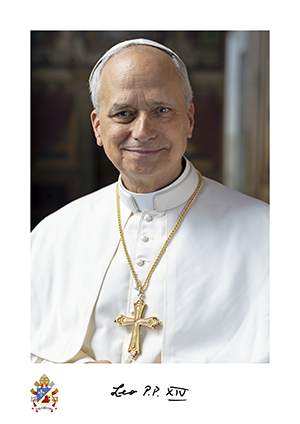
- Chicagoan. Pope Leo was born Sept. 14, 1955, and grew up in the south suburbs of Chicago. His father, Louis Marius Prevost, was an educator, and his mother, Mildred Martínez, was a librarian. He has two older brothers, was active in his childhood parish and his brother John says he is a White Sox fan. His family is reportedly of French, Italian and Spanish origin, with Creole heritage on his mother’s side. He loves the sport of tennis and plays regularly.
- Cosmopolitan. While American, Pope Leo has a global perspective, having lived most of his adult life in Peru and Rome. Based on his assignments, it appears that he has spent less than five years combined living in the United States since his priesthood ordination in 1982.
- Augustinian. He is a member of the Order of St. Augustine, a religious order that dates to 1244 and was founded to live the spirituality of early Christians. The order considers St. Augustine, a fifth-century theologian, philosopher and bishop of Hippo, its father. Before ordination, Pope Leo attended St. Augustine Seminary High School in Holland, Michigan, and Villanova University near Philadelphia, both Augustinian institutions. Augustinians are mendicant, meaning that they traditionally survive on begging or their own work, do not hold property and do not spend their life in a single location. Pope Leo is the first Augustinian to assume the chair of Peter, and the second member of a religious order to do so in nearly two centuries – the first being the first Jesuit pope, Pope Francis.
- Canonist. Pope Leo is a canon lawyer, having received his licentiate and doctorate in canon law from the Pontifical University of St. Thomas Aquinas, also known as the Angelicum, in Rome. He wrote doctoral thesis on “The role of the local prior in the Order of Saint Augustine.” For nearly a decade he served the Archdiocese of Trujillo, Peru, as its judicial vicar, which oversees the diocesan tribunal. During that time he was also a professor of canon, patristic and moral law in the San Carlos e San Marcelo Major Seminary.
- Leader. Pope Leo has an impressive range of leadership experience. After several pastoral and seminary formation roles in Chicago and Peru, he was elected in 1999 to oversee his order’s province in Chicago, and then two years later, he took the helm of the order worldwide. He was reelected for a second six-year term, ultimately holding the Rome-based position for 12 years. Then, in 2014, Pope Francis appointed him to oversee the Diocese of Chiclayo, Peru, a role he held for nine years and that included a year-long stint as the apostolic administrator of the Diocese of Callao, Peru, whose see city is nearly 500 miles south of Chiclayo. In 2023, Pope Francis appointed him as prefect of the Holy See’s Dicastery for Bishops, which oversees the appointments of bishops worldwide.
- Baby boomer. At age 69, Pope Leo is seven years younger than Pope Francis was when he was elected in 2013, and nine years younger than Pope Benedict XVI when he was elected in 2005. He is 11 years older than St. John Paul II, who was 58 at his 1978 election.
- Socially minded. His name is an apparent nod to Pope Leo XIII, who led the church from 1878 until 1903 and is especially known for his 1891 encyclical “Rerum Novarum,” or “On the Condition of the Working Classes.” That document responded to the state of the industrial society at the end of the 19th century and cemented Pope Leo XIII’s position as the modern father of Catholic social doctrine. Pope Leo XIII also composed the popular St. Michael prayer, penned an 1879 encyclical calling for the rooting of Christian philosophy in the writings of St. Thomas Aquinas, and issued an 1899 apostolic letter condemning “Americanism,” a worldview he feared was held by American prelates that bolstered American values such as pluralism and individualism to the detriment of Catholic teaching.
- Peace bearer. Pope Leo’s first words to the world were “Peace be with you” on a balcony of St. Peter’s Basilica overlooking masses of people in the square. “Beloved brothers and sisters, this is the first greeting of the Risen Christ, the Good Shepherd who has given his life for the flock of God,” he continued. “I, too, would like this greeting of peace to enter your hearts, reach your families, to all people, wherever they may be, to all peoples, to all the earth. … It comes from God, God who loves us all unconditionally.”
- Polyglot. Pope Leo speaks English, Spanish, Italian, French and Portuguese, and he reads Latin and German. He gave his first greeting May 8 in Italian but switched to Spanish to greet the faithful of his former Diocese of Chiclayo before giving the “urbi et orbi” blessing in Latin. On May 9, he began his first public homily with English but preached most of it in Italian.
- Successor of Peter. On his first full day as pope May 9, Pope Leo preached before the College of Cardinals who elected him, speaking of an exchange between Jesus and St. Peter, the first pope. He called the church “an ark of salvation sailing through the waters of history and a beacon that illumines the dark nights of this world. And this, not so much through the magnificence of her structures or the grandeur of her buildings – like the monuments among which we find ourselves – but rather through the holiness of her members.”
(Maria Wiering is senior writer for OSV News.)
FEATURE PHOTO: … Servant leadership lesson…
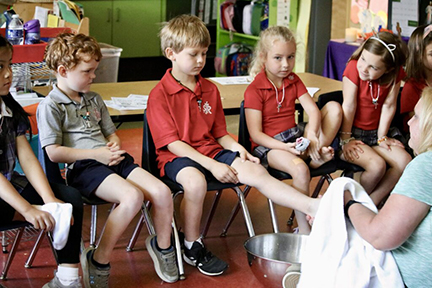
Pope Leo prays for vocations, for peace and for mothers on Mother’s Day
By Cindy Wooden
VATICAN CITY (CNS) – With a huge and festive crowd gathered in St. Peter’s Square, Pope Leo XIV led his first Sunday recitation of the “Regina Coeli” prayer and urged all Catholics to pray for vocations, especially to the priesthood and religious life.
Before the pope appeared on the central balcony of St. Peter’s Basilica May 11, the crowd was entertained by dozens of marching bands and folkloristic dance troupes who had marched into the square after attending an outdoor Mass for the Jubilee of Bands and Popular Entertainment.
Pope Leo also noted that it was Mother’s Day in Italy, the United States and elsewhere. “I send a special greeting to all mothers with a prayer for them and for those who are already in heaven,” he said. “Happy holiday to all moms!”
Italian officials estimated 100,000 people were in St. Peter’s Square or on the surrounding streets to join the new pope for the midday prayer.
In his main address, Pope Leo said it was a “gift” to lead the crowd for the first time on the Sunday when the church proclaims a passage from John 10 “where Jesus reveals himself as the true Shepherd, who knows and loves his sheep and gives his life for them.”
It also is the day the Catholic Church offers special prayers for vocations, especially to the priesthood and religious life.
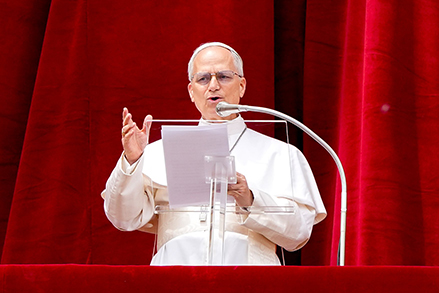
“It is important that young men and women on their vocational journey find acceptance, listening and encouragement in their communities, and that they can look up to credible models of generous dedication to God and to their brothers and sisters,” the pope said.
Noting that Pope Francis had released a message in March in preparation for the day of prayer, Pope Leo told the crowd, “Let us take up the invitation that Pope Francis left us in his message for today: the invitation to welcome and accompany young people.”
“And let us ask our heavenly Father to assist us in living in service to one another, each according to his or her state of life, shepherds after his own heart, capable of helping one another to walk in love and truth,” the new pope said.
Setting aside his prepared text, he told young people in the square, “Do not be afraid! Welcome the call of the church and of Christ the Lord.”
After reciting the “Regina Coeli,” he mentioned how the 80th anniversary of the end of World War II in Europe was celebrated May 8, the day of his election.
While that is reason to celebrate, he said, “’the Third World War is being fought piecemeal,’ as Pope Francis often said. I, too, appeal to the leaders of the world, repeating this ever-relevant plea: Never again war!”
Pope Leo prayed for the people of Ukraine, saying, “May everything possible be done to achieve as soon as possible an authentic, just and lasting peace. May all prisoners be freed, and may the children return to their families.” Ukraine says thousands of children have been forcibly taken to Russia during the war.
The pope also told the crowd, “I am deeply saddened by what is happening in the Gaza Strip. Let the fighting cease immediately. Humanitarian aid must be given to the exhausted civilian population, and all hostages must be released.”
He praised India and Pakistan for reaching a ceasefire agreement, but said, “But how many other conflicts are there in the world?”
Pope Leo entrusted his “heartfelt appeal” for peace to Mary, “Queen of Peace, that she may present it to the Lord Jesus to obtain for us the miracle of peace.”
Earlier in the day, Pope Leo had celebrated Mass at an altar near the tomb of St. Peter in the grotto of St. Peter’s Basilica. Father Alejandro Moral Anton, the prior general of the Order of St. Augustine, to which the pope belonged, was the principal celebrant.
Afterward, the Vatican press office said, he stopped to pray at the tombs of popes who are buried in the grotto.

